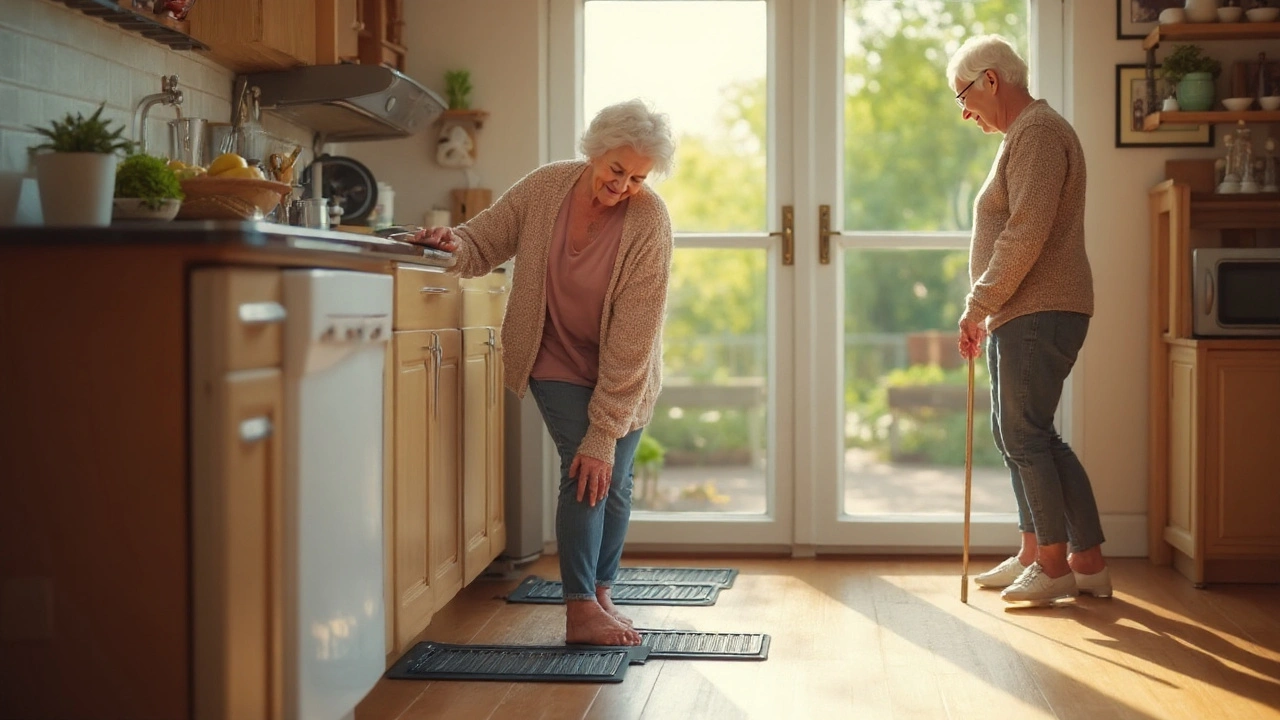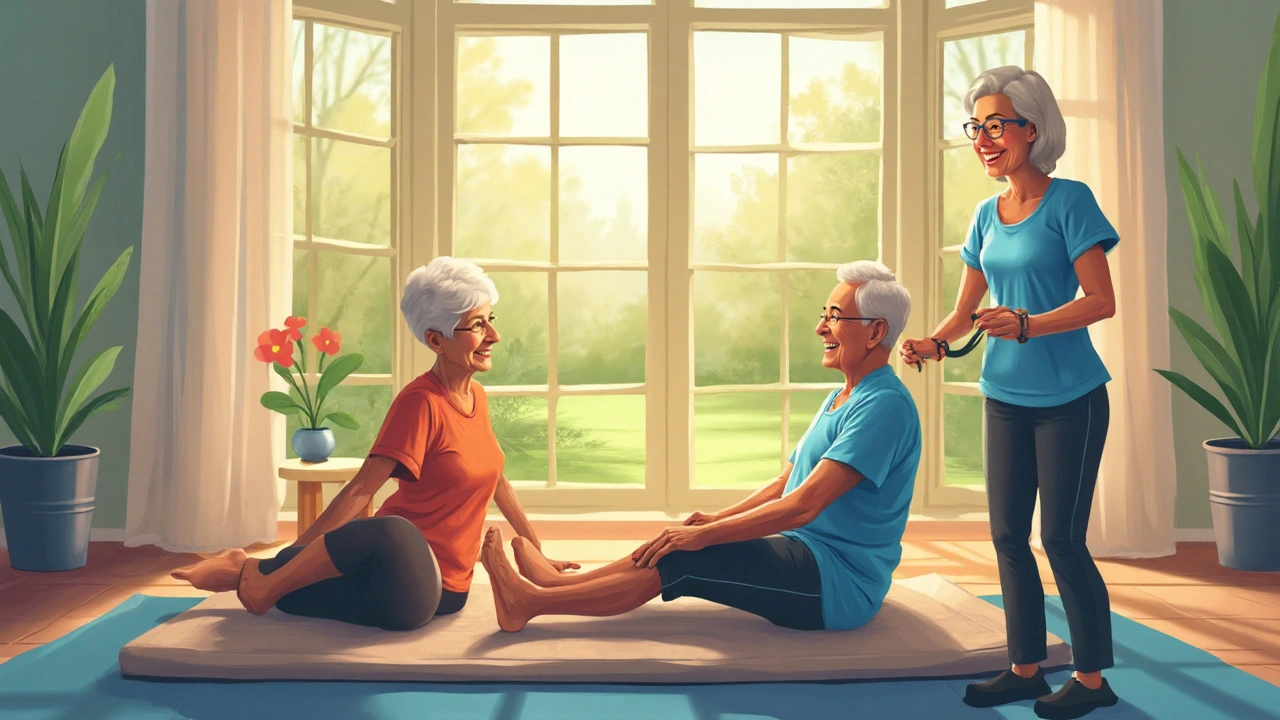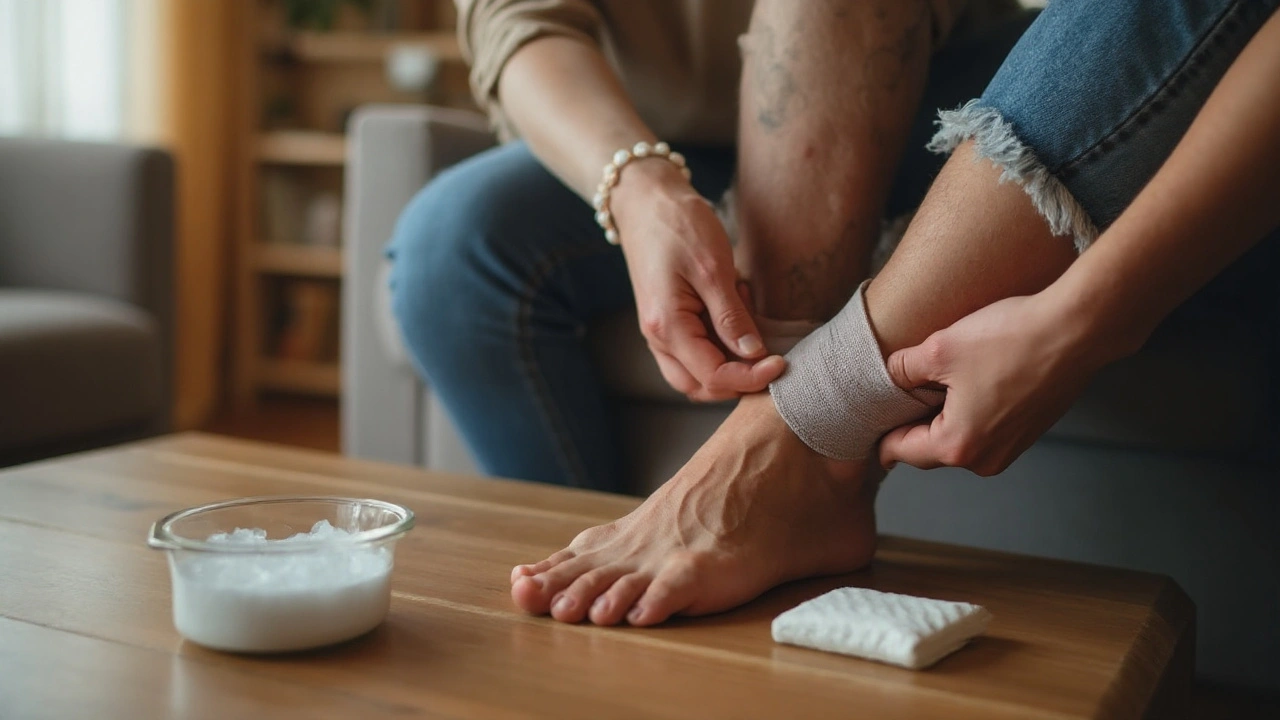Preventing & Managing Sprains in the Elderly: Expert Tips

TL;DR
- Identify the most common cause: sudden ankle twists and loss of balance.
- Reduce risk with daily balance exercises and home‑hazard checks.
- Apply RICE (Rest, Ice, Compression, Elevation) within the first 48hours.
- Seek a Physical Therapist for tailored rehab and gait training.
- Address underlying issues like VitaminD deficiency or osteoporosis.
Sprain is a stretch or tear of ligaments surrounding a joint, often caused by an unexpected twist or impact. In older adults, sprains most frequently affect the Ankle Joint, where the Ligament network is thin and less elastic. Understanding why seniors are prone to these injuries sets the stage for effective prevention and management.
Why Sprains Matter More for the Elderly population
Age‑related changes-reduced muscle mass, slower reaction time, and diminished proprioception-turn a simple stumble into a serious sprain. Studies from Australian geriatric centres show that nearly 30% of falls in people over 70 involve an ankle sprain, and up to 15% of those lead to prolonged mobility loss. The impact is not just physical; loss of independence can trigger depression and higher healthcare costs.
Key Risk Factors to Watch
- Balance deficits: Weak calf muscles and poor vestibular function make it hard to correct a misstep.
- Footwear: Slippers or shoes with smooth soles lack grip.
- Home hazards: Loose rugs, uneven flooring, and cluttered walkways increase twist risk.
- Underlying conditions: Osteoporosis, diabetic neuropathy, and VitaminD deficiency weaken bones and nerves.
- Medication side‑effects: Sedatives and blood pressure drugs can cause dizziness.
Prevention Strategies That Really Work
Effective prevention blends three pillars: strengthening, environment, and assistive support.
1. Daily Balance Exercise routines
Simple moves like single‑leg stands, heel‑to‑toe walks, and TaiChi sequences improve proprioceptive feedback. A Melbourne community centre reported a 22% drop in fall‑related sprains after seniors completed a 12‑week balance program three times a week.
2. Home Safety Audits
Conduct a Fall Risk Assessment using a checklist: secure loose rugs, install grab bars in bathrooms, and improve lighting. The assessment can be done by a Physical Therapist or a trained occupational therapist.
3. Appropriate Assistive Device use
Cane or walking stick selection should match the individual's gait pattern. An ergonomic cane with a quad base offers better stability than a single point cane. Research from the University of Sydney indicates that seniors using properly fitted assistive devices experience 35% fewer ankle twists.

Immediate First‑Aid: The RICE Protocol
Act fast. The first 48hours set the healing trajectory.
Rest and Protection
Avoid weight‑bearing on the injured foot. Use crutches or a supportive boot if walking is necessary.
Ice Application
Apply Ice Therapy for 15‑20 minutes every 2hours. Ice reduces swelling by constricting blood vessels and numbing pain receptors.
Compression
Wrap the ankle with a Compression Bandage to limit fluid accumulation, but keep the bandage snug, not tight.
Elevation
Raise the foot above heart level to promote venous return and further cut swelling.
| Option | Onset of Relief | Main Benefits | Contra‑indications |
|---|---|---|---|
| Ice Therapy | 5‑10min | Reduces swelling, numbs pain | Raynaud's disease, open wounds |
| Heat Therapy | 15‑30min | Improves blood flow, eases stiffness after 48h | Acute swelling, recent bruising |
| Compression Bandage | Immediate | Limits fluid buildup, supports joint | Severe circulation issues, edema disorders |
Rehabilitation: From Rest to Return
Once swelling subsides (usually after 3‑5days), shift focus to mobility and strength.
Professional Guidance
A Physical Therapist crafts a personalized plan that blends range‑of‑motion drills, resistance band work, and gait training. The goal is to restore proprioception and prevent compensatory patterns that could stress other joints.
Home‑Based Exercises
- Alphabet ankle: Trace the alphabet with your big toe while seated to improve dorsiflexion.
- Theraband eversion: Loop a resistance band around the forefoot and pull outward, strengthening lateral ligaments.
- Heel raises: Stand on a step, lift heels, and lower slowly; perform 2sets of 10.
Consistency matters more than intensity-15minutes daily yields noticeable balance gains within a month.
Addressing Underlying Health Issues
Sprains rarely occur in isolation. Managing bone health and nutrition accelerates recovery.
VitaminD and Calcium
Low VitaminD levels impair muscle function and increase fall risk. A serum level below 30nmol/L is considered deficient. Supplementation of 1000IU daily, combined with 1200mg calcium, has been shown to cut fall‑related injuries by 20% in seniors.
Osteoporosis Screening
Bone density tests (DXA scans) identify seniors at heightened fracture risk. If a sprain leads to an unreduced joint, the compromised bone may fracture under normal load.
Creating a Sprain‑Smart Lifestyle
- Stay active: Walking groups, water aerobics, and low‑impact cardio keep muscles toned.
- Mind footwear: Choose shoes with firm heel counters, non‑slip soles, and good arch support.
- Hydrate and nutrition: Adequate protein supports tissue repair; magnesium aids muscle relaxation.
- Regular check‑ups: Review medications with a GP to minimise dizziness side‑effects.
- Community resources: Local councils often run free balance‑class workshops for seniors.
By weaving these habits together, seniors shift from reactive injury management to proactive joint health.

Frequently Asked Questions
How soon should I apply ice after a sprain?
Start within the first hour and repeat every 2hours for the first 48hours. This timing maximises swelling control.
Can I use heat therapy right after a sprain?
Avoid heat during the acute phase (first 48hours) because it can increase bleeding. Switch to gentle heat after swelling subsides to improve flexibility.
When should I see a doctor for a sprained ankle?
Seek medical attention if you notice severe pain, inability to bear weight, obvious deformity, or if swelling doesn’t improve after 72hours. These signs may indicate a fracture.
What are the best balance exercises for beginners?
Start with seated heel‑to‑toe taps, progress to standing near a support, then try single‑leg stands for 10‑15seconds. TaiChi sequences are also gentle yet effective.
Is a cane enough to prevent ankle sprains?
A cane helps with stability, but combine it with proper footwear, home safety tweaks, and regular balance training for optimal protection.
How does VitaminD affect sprain recovery?
VitaminD supports muscle strength and nerve function. Adequate levels speed up the healing of ligaments and reduce the likelihood of repeat injuries.

Wow, this guide hits the nail on the head for seniors who want to stay steady on their feet. Daily balance drills like single‑leg stands aren't just for athletes; they rewire proprioception that fades with age. Pair that with a quick home safety sweep-no loose rugs, good lighting-and you cut the odds of a twisted ankle dramatically. I’ve seen my grandma bounce back faster after a 12‑week program, and she swears by the ankle alphabet exercise. Keep the motivation high, and those sprains will become a rare footnote.
Sharp, vivid advice-short and sweet. The balance tip is as bright as a sunrise.
Great rundown, especially the emphasis on Vitamin D. It’s easy to overlook nutrition when focusing on exercises. A quick blood test can flag a deficiency before a sprain even happens. Adding a calcium‑rich snack after therapy sessions can speed tissue repair.
The presented protocol aligns with established orthopedic guidelines. Rest, ice, compression, and elevation remain cornerstones of acute sprain management. It is advisable to seek professional assessment if symptomatology persists beyond the stipulated timeframe.
Oh great, another “expert” list-just what the world needed 🙄.
i think the tips r solid but watch out for the footware
From a geriatric physiotherapy perspective, integrating neuromuscular activation drills enhances joint stability under dynamic loads. Incorporating proprioceptive perturbation-such as wobble board shifts-stimulates the vestibulospinal pathways that often deteriorate with age. Moreover, calibrating the RICE timeline to 48 hours maximizes the inflammatory cascade modulation, reducing fibroblast proliferation excess. Adjunctive supplementation with 1000 IU of cholecalciferol synergizes with calcium to fortify the extracellular matrix. Finally, consistent gait analysis ensures that compensatory biomechanics are corrected before they precipitate secondary injuries.
Whoa, that’s a mouthful! You just turned a simple sprain guide into a PhD thesis. Still, the science checks out and gives us a solid roadmap.
Look, if we dump all that fancy jargon and just stick to good old common sense, we’ll keep more seniors on their feet. No need to overcomplicate things.
Exactly! Simplicity is the secret weapon-plain language, clear steps, and a dash of determination can outshine any buzzword soup.
Seriously-move those rugs, wear proper shoes, and do the ankle alphabet exercise!!!
I’d add that regular check‑ups with a primary care physician can flag medication side‑effects that tip the balance. Even a slight dip in blood pressure can cause a wobble that leads to a twist. So keep that med list up to date and discuss dizziness risks during visits.
Love the community angle-walking groups and tai chi classes are lifesavers. It’s amazing how a bit of social motivation can turn a boring exercise into a fun routine. Plus, having buddies around makes the home safety audit feel less like a chore. Keep sharing those resources, and let’s keep everyone moving.